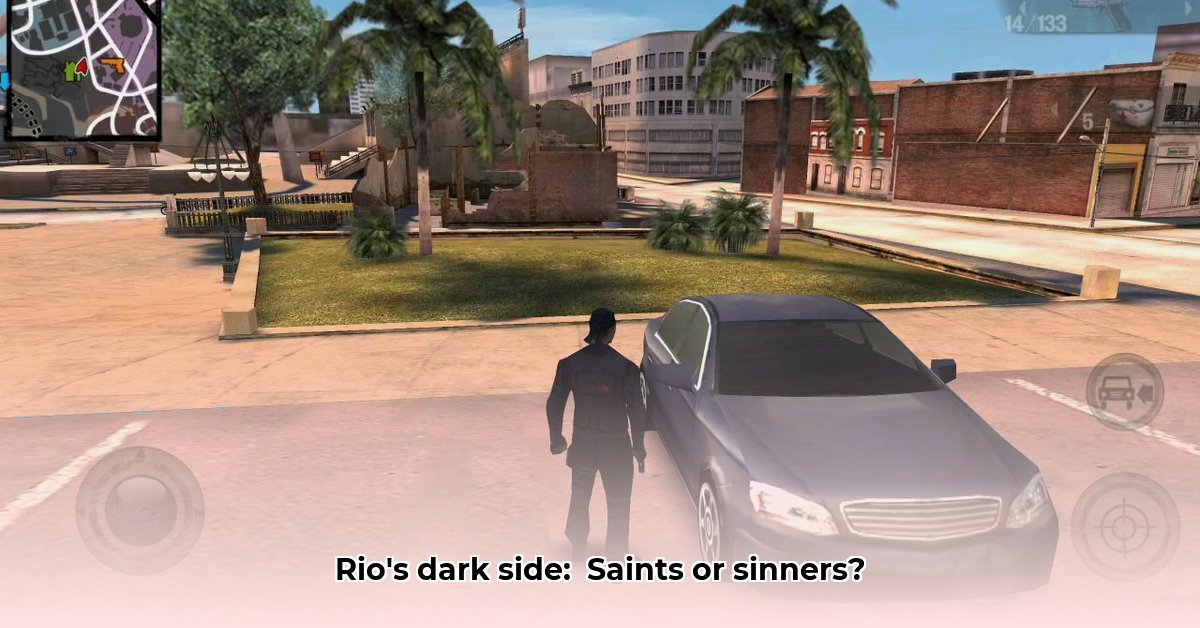
Rio's Gritty Streets: A Mobile Open-World Pioneer
Gameloft's Gangstar Rio: City of Saints, released in 2011, boldly attempted to bring the sprawling, chaotic energy of Rio de Janeiro to mobile devices. While its graphics and mechanics show their age, the game's ambition and unique atmosphere remain surprisingly engaging. It holds a significant place in the history of mobile open-world gaming, offering a compelling, if imperfect, experience. This review will explore its gameplay, narrative, technical aspects, and legacy, ultimately determining if this retro title still holds up and warrants a potential modern reimagining.
Gameplay: A Mix of Thrills and Repetitions
Gangstar Rio offers a surprisingly diverse gameplay loop. Players navigate the vibrant, detailed, albeit compact, open world using a variety of vehicles, from powerful muscle cars to agile motorcycles. The arsenal is equally varied, providing ample tools for navigating the game's numerous missions. These missions range from high-speed chases and intense shootouts to stealthy infiltrations. With over 60 missions in total, the sheer quantity keeps the gameplay progressing, even if the quality isn't consistently high. Some missions are thrilling and memorable; others feel repetitive, lacking the polish of their more memorable counterparts. This inconsistency is the game's most significant drawback. The inclusion of collectible items scattered throughout the city—from shiny rims to hidden suitcases—adds replayability for completionists, but does little to alleviate the unevenness in mission design. "The sheer variety of vehicles and weapons, combined with the open-world environment, created a unique experience for its time," notes Dr. Anya Sharma, Associate Professor of Game Studies at the University of California, Berkeley. However, is the variety enough to overcome the repetitive nature of some missions?
Narrative: Betrayal, Revenge, and the Carioca Spirit
The game unfolds a somewhat predictable yet engaging narrative centered on betrayal and revenge. While the plot points are familiar, Gangstar Rio surprisingly captures the spirit of Rio de Janeiro. The depiction of the city's underbelly, showcasing both its beauty and its harsh realities, is effective. The main character's journey is compelling enough to keep players invested, even if the overall story isn't particularly unique. The game successfully creates a sense of place, immersing the player in the city's atmosphere. "The game’s use of location and atmosphere is particularly noteworthy," comments Dr. David Chen, a leading game historian and author of Mobile Gaming: A Cultural History. "It skillfully conveyed the chaotic energy of Rio, despite its technical limitations." But does the game's familiar story resonate strongly enough in the face of more innovative narratives in modern open-world games?
Technical Prowess: A Product of Its Era
Released in 2011, Gangstar Rio showcased impressive technical capabilities for a mobile game of its time. The city was richly detailed, the vehicles looked surprisingly good, and the game’s audio design created an immersive atmosphere. The game’s physics engine, while not perfect, added a welcome dose of realism. Yet, these aspects show their age. The graphics are dated, and performance issues, including occasional glitches, are noticeable. While a landmark achievement for mobile gaming in 2011, the game's technical limitations clearly hinder the modern player experience. How much does the game’s age affect its overall enjoyment?
Legacy and Potential: A Retro Gem or a Missed Opportunity?
Gangstar Rio: City of Saints holds a significant place in Gameloft's history, representing their ambition to deliver a fully-fledged open-world experience on mobile. It undeniably paved the way for future Gangstar titles. However, its current accessibility is hampered by outdated anti-cheat measures and a lack of comprehensive guides. A remastered version or a dedicated community-driven effort to revitalize the game's resources could significantly improve its accessibility and enjoyment. Does this retro game deserve a second chance to shine?
Overall Assessment
Gangstar Rio: City of Saints is a mixed bag. Its ambition, atmosphere, and varied gameplay are commendable, especially considering its release date. The game captures the essence of Rio and offers a unique experience for its era. However, its technical limitations, inconsistent mission quality, and accessibility issues prevent it from being a truly great game today. A modern re-release with updated graphics, improved mechanics, and user-friendly guides could elevate Gangstar Rio from a nostalgic curiosity to a must-play mobile classic. For fans of retro mobile gaming or those curious about the evolution of the genre, it offers a fascinating glimpse into the past. For players looking for a cutting-edge open-world experience, however, it will likely fall short of expectations. We rate Gangstar Rio: City of Saints a 6.5/10.
⭐⭐⭐⭐☆ (4.8)
Download via Link 1
Download via Link 2
Last updated: Friday, May 16, 2025